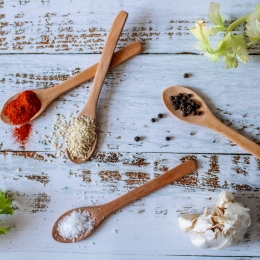The Teal Pumpkin Project: Have an allergen-free Halloween
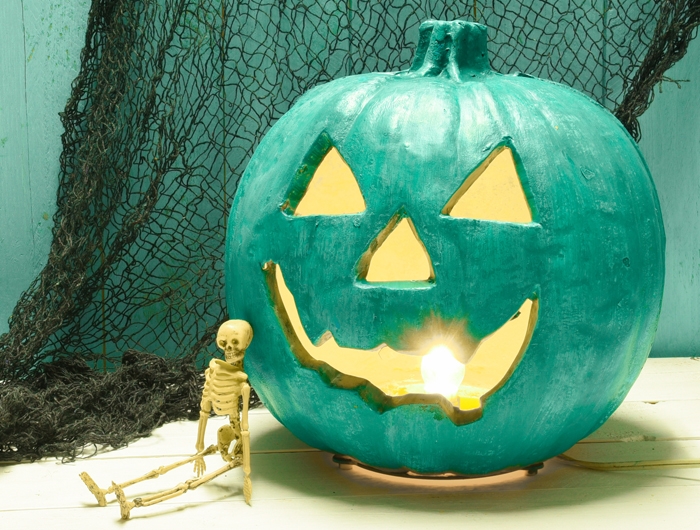
Kelly - stock.adobe.com.
An initiative featuring bright teal pumpkins can help the one in 13 kids who have food allergies enjoy a safe and spooky holiday. Here’s how to participate in the Teal Pumpkin Project, what to hand out to visitors, and how to trick-or-treat safely this year.
What is the Teal Pumpkin Project?
The Teal Pumpkin Project is an annual awareness campaign by Food Allergy Research & Education, an organization that helps improve the quality of life for people with food allergies through allergen research and advocacy work. The project makes Halloween more accessible and safe thanks to a creative cue that lets trick-or-treaters know where allergy-friendly treats are on offer. The idea is a simple one: Participants paint a pumpkin teal and post a sign that lets trick-or-treaters and their caregivers know that non-food items are available for children with food allergies.
In October, you’ll be able to add your address to the Teal Pumpkin Map, a search tool that helps families with food allergies find safe locations for trick-or-treating.
Why teal?
Teal is the official color of food allergy awareness and action, much like pink is the color associated with breast cancer research and awareness. In the month of May, FARE encourages individuals with food allergy and allergy allies to wear teal for Food Allergy Awareness Week. For more about how to spread awareness, check out FARE's Living Teal resource.
The Big Nine food allergens
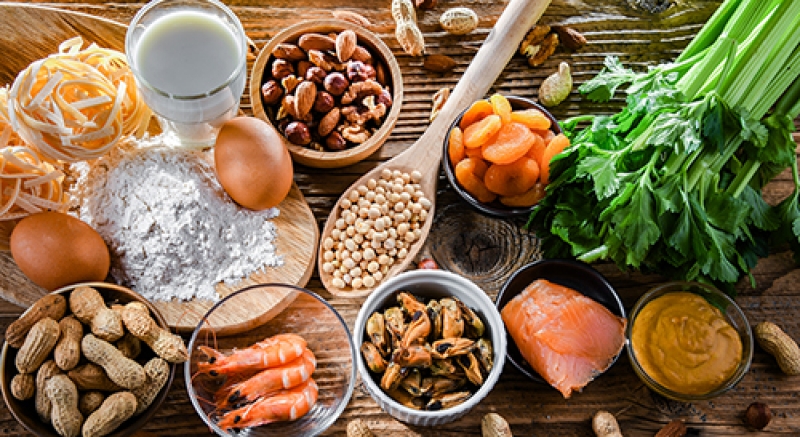
Sesame became the official ninth major allergen in the US with passage of the Food Allergy Safety, Treatment, Education, and Research Act in 2021, commonly known as FASTER, joining eggs, soy, milk, wheat, crustacean shellfish, peanuts, tree nuts, and fish as ingredients that must be listed by their common names in the ingredients list of any food that contains them, or must be listed in a separate “Contains” statement near the ingredients list. These nine ingredients account for 90 percent or more of allergic reactions in the US.
Why food allergy awareness matters

Some 32 million Americans, 5.6 million of whom are children, are allergic to at least one food, and 40 percent of children with food allergy are allergic to more than one food. Reactions to an allergen range from mild—itchiness in the mouth or skin, hives, and nausea—to severe, including shortness of breath and swelling of the throat and mouth. While not every reaction is deadly, some are; anaphylaxis requires immediate medical treatment and could result in coma or death.
Symptoms of an allergic reaction occur within minutes or a couple of hours of eating a food. They include hives; flushed skin or rash; tingling or itchy sensation in the mouth; face, tongue, or lip swelling; vomiting; diarrhea; abdominal cramps; coughing; wheezing; dizziness; lightheadedness; swelling of the throat and vocal cords; difficulty breathing; and loss of consciousness.
How to join the Teal Pumpkin Project
To participate in the teal pumpkin project, simply purchase a teal plastic pumpkin or paint a pumpkin blue-green. Place the teal pumpkin near the door of your home or other building where you will be handing out treats for the holiday. FARE has printable signs for your home and school, as well as informative printable neighborhood fliers, lists of non-food items that are appropriate for trick-or-treaters, and other resources for individuals with food allergies.
Non-food items for trick-or-treaters
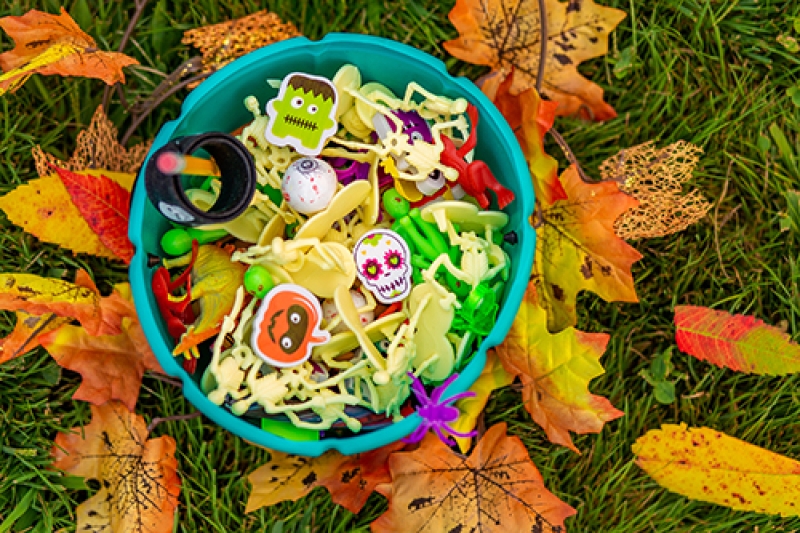
This is the fun part! Non-food items for trick-or-treaters can be anything, really, but some popular choices include bubbles, crayons, mini coloring books, trading cards (like Pokémon or baseball cards), noisemakers, glow sticks, plastic jewelry, bookmarks, stencils, stickers, temporary tattoos, and more.
Note that Play-Doh contains wheat and isn’t safe for those with wheat allergy or celiac disease. If you’d like to offer trick-or-treaters a gluten-free modeling dough alternative, here’s a guide to safe alternatives.
How to plan an allergen-free party
If you’re having a gathering where food is served, it’s helpful to mark foods that contain the Big Nine with the appropriate allergen info. But for some foods, especially tree nuts, peanuts, and sesame, the amount that can cause a reaction is small, and the reaction is more likely to be severe than with other allergens. That means the safest option is to avoid using these ingredients in any foods served in spaces where others’ food allergens are unknown. Here are some ideas for allergen-free snacks and treats that are appropriate for most everyone.
Tips for trick-or-treating with food allergy
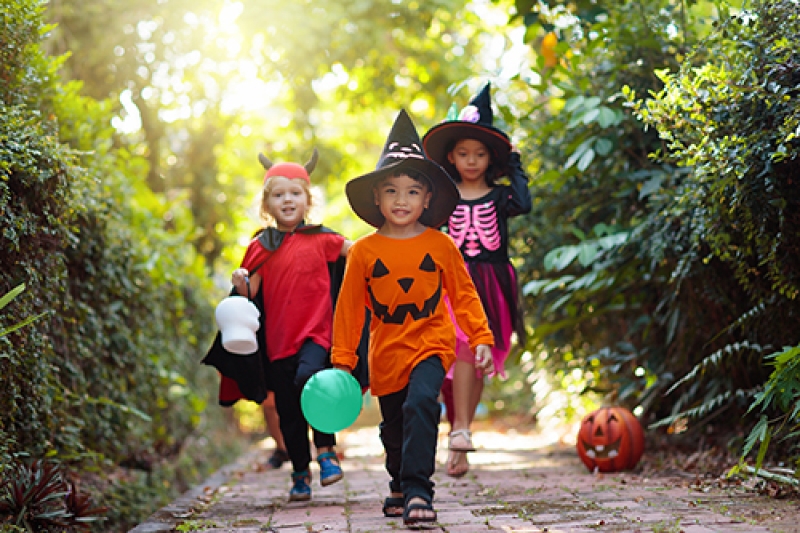
Halloween can be an especially fun holiday for kids, but for those with food allergy, it introduces special risks. To make sure you’re trick-or-treating in the safest possible way, FARE has outlined a number of helpful tips, including implementing a “no eating while trick-or-treating” rule, carrying an Epi-Pen at all times, and starting a new “Good Witch” tradition that lets families swap unsafe food items for nonfood treats. Visit FARE’s Allergy-Safe Tips for Trick-or-Treating resource for more.
Latest in Food Allergy news
Have a food allergy? What to know about FDA's new guidance
Food Labeling
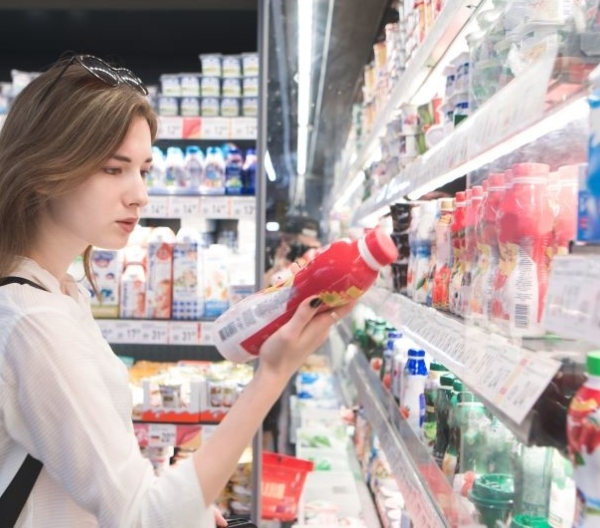
Sesame allergy: Food manufacturing shortcut creates new risks
Food Labeling
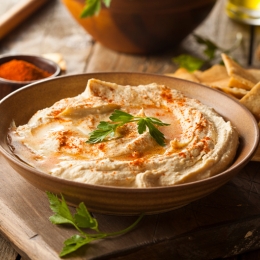
Back to school: Allergen-free snacks for the whole class
Healthy Kids

FDA misses opportunity to prevent food manufacturers from adding sesame, an allergen, to evade cross-contamination rules
Government Accountability
.jpg?h=da95aa3a)
FDA’s tepid response to intentional addition of allergens to foods fails consumers
Government Accountability
